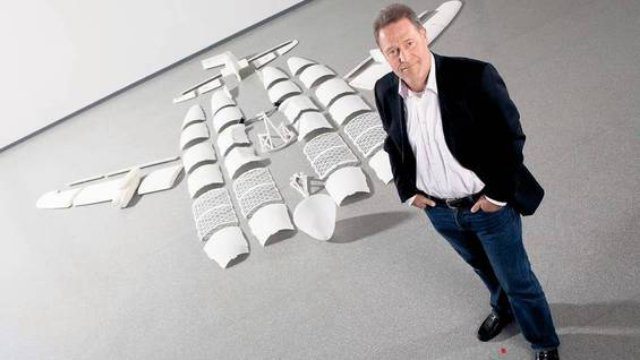French aerospace giant Airbus has revealed THOR, an Unmanned Aircraft Vehicle that is completely 3D printed and points to a streamlined production method for passenger planes of the future.
THOR took just four weeks to print and build and is far more than a simple drone. It’s a scaled-down test bed for design principles and the name stands for: Test of High-tech Objectives in Reality.
It is just four metres long and weighs in at 25kg, but this is no toy. It cost €20,000 to produce and it will get a steady stream of development parts. Computer Aided Design and Computational Fluid Dynamics programmes and wind-tunnel work are all useful, but there is no substitute for actually producing parts and putting them on a plane.
A scaled down test bed
That’s when you find out how well a theory works in the real world and Airbus hopes this scaled down, cut price test plane will allow them to try a vast number of iterations of each design. That simply wouldn’t be possible on a full-size alternative.
The remote control drone is made from just 50 printed parts, as well as two electric motors. Airbus will continuously replace parts to test new aerodynamic theories and production methods in the real world. It hopes, then, that THOR could have a profound effect on Airbus’s passenger planes of tomorrow.
THOR has already completed a 40km test flight near Hamburg and is scheduled for 18 more flights in 2016.
From a single bracket to an entire plane?
The French company has embraced 3D printing and is one of the most forward-thinking companies out there right now. After printing a single titanium cabin bracket on the A350 in 2014, it now prints over 1000 parts on the A350 XWB and has invested heavily in the technology.
It is clearly working towards a future where entire planes are 3D printed. When that happens the company will be able to reduce the weight and make more efficient planes with a lower carbon footprint.
It has taken a number of patents that could change the whole future of transport, not just the aerospace industry. One of its most recent patents involved a concept for printing a fuselage in one piece from Carbon Fibre Composite. This could easily apply to cars, buses and trains, and the company is coming up with novel uses for its German RepRap printers on an almost daily basis.
Airbus goes bionic
Lightweight structural components based on bionic materials are a recent innovation at Airbus. It has taken inspiration from some unusual sources, including lily pads that can support a disproportionate amount of weight. That has helped the company produce a cabin-partition that is 45% lighter than the standard unit, without sacrificing strength.
Polyamide-Aluminium wing sections are another recent innovation that can strip weight from the plane and speed up production.
Every kg saved in an aeroplane makes a significant different to the fuel consumption over the course of a year, so this pioneering technology could significantly reduce the whole industry’s environmental impact.
Lessons for the rest of the world
Subsidiary company Premium AEROTEC applies the advanced technology to other sectors and recently unveiled the Light Rider motorcycle with a 3D-printed frame. Aerospace technology is at the cutting edge, so Airbus could be a major source of innovation for other transport companies, industry and even the medical sector in the years ahead.
It’s making progress at an incredible rate, that’s for sure, and we’re looking forward to seeing what the company comes up with next.



